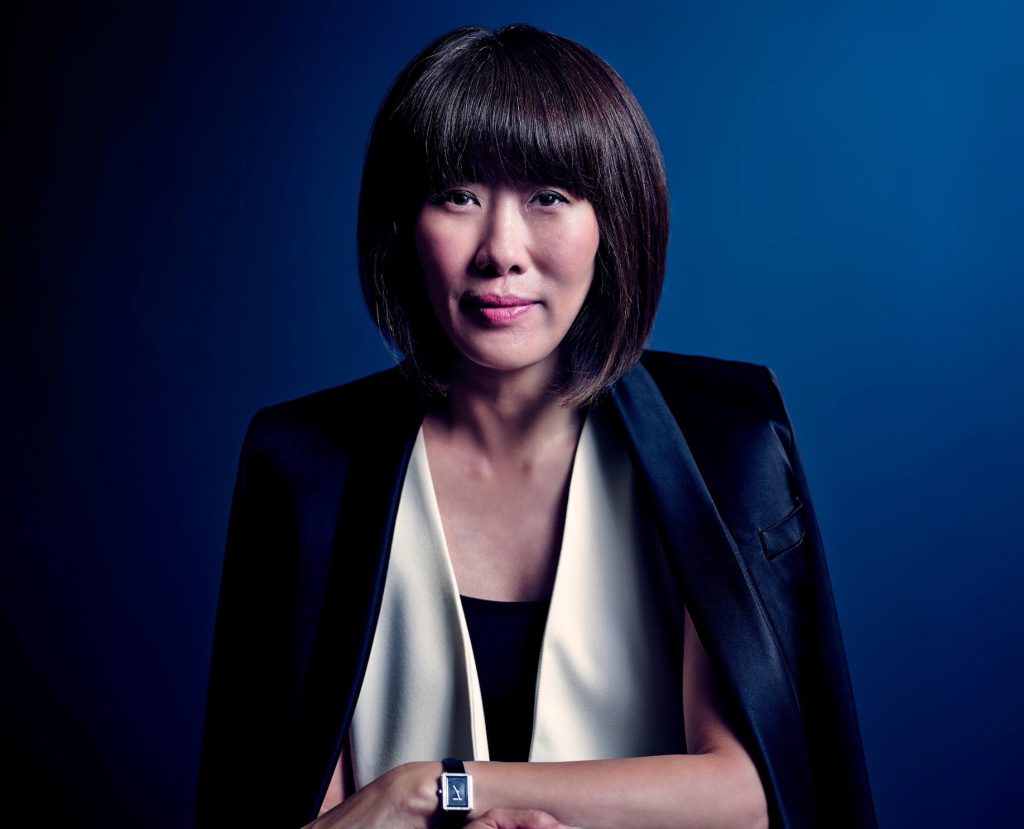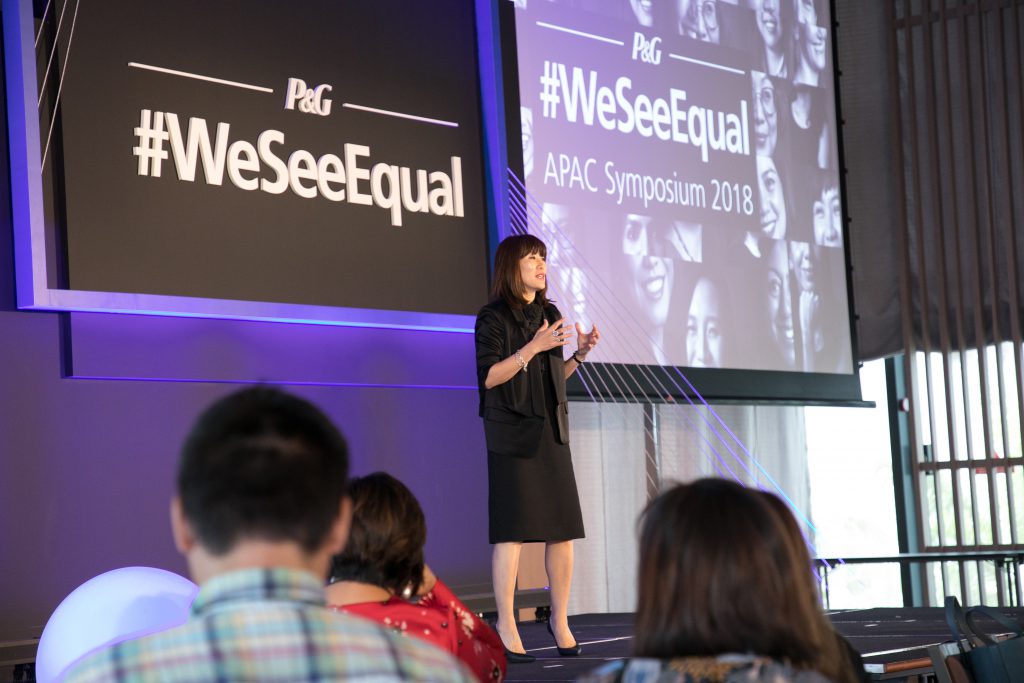Breaking Glass Ceilings: 5 Insights from Sue Kyung Lee, P&G Korea’s first female CEO
As P&G Korea’s first female CEO in its 24-year history, Sue Kyung Lee has definitely shattered a few glass ceilings for women in leadership positions. She shares her thoughts on how workplaces can be more supportive to women, her experience as a female CEO, and career advice she lives by.

In Internet speak, Sue Kyung Lee is quite literally the epitome of #Goals.
The South Korean-born shattered glass ceilings when she became the first female CEO in Procter & Gamble Korea’s 24-year history. Needless to say, this was no small feat, given South Korea’s patriarchal social fabric.
Today, as the Vice President – Global Safeguard and Asia Pacific Skin & Personal Care, she spearheads P&G’s #WeeSeeEqual movement in APAC.
#WeeSeeEqual is P&G’s commitment to driving gender equality within and beyond the organization. You’ve probably chanced upon their commendable advertisements that make bold statements breaking female stereotypes: like SK-II’s #ChangeDestiny or OLAY’s #FearlessAtAnyAge instead.
A few of their policies introduced to boost gender equality at work include flexible working schemes, career sponsorship programmes, and a 14-week mandatory maternity leave across all their countries in APAC, among others. And its efforts are certainly coming to fruition.
Get this: today, P&G has a 50:50 gender representation in their managerial positions within the Asia-Pacific region. They’re clearly doing something right, considering how women are still drastically underrepresented in boards and senior positions globally. (Only 1 in 8 positions in leadership boards are held by women in Singapore, for one.)
It’s safe to say that the fight for female representation might be the defining social conversation of 2018. And according to Lee, P&G wants to “set the tone” in their pursuit of gender equality for others in the industry to follow suit.
Considering how Lee has walked the talk of fighting against gender biases and her own personal dilemma of choosing between career or family, the campaign couldn’t have a better leader at its head.
I had the pleasure of chatting with the delightful Sue Kyung Lee to pick her brains on being a female leader in a male-dominated world, how the workplace should support women, advice she lives by, and more.
“Be Yourself”: Finding her footing as a female leader in a male-dominated world
While she admits that she never felt that being a female leader within P&G was a barrier, she concedes she has experienced her fair share of gender biases from other male industry leaders.
The industry forums she attended typically had the standard demographic: “male CEOs aged between their 40s to 60s, who felt uncomfortable accepting (her) as an equal at the beginning.”
A female CEO was clearly a foreign concept – especially more so for one who doesn’t fit “the stereotype on how female leaders should look”, she says. (To give you an idea of how alien the idea is, she’s been mistaken as an interpreter or assistant to her male subordinates.) After all, while she observed that women in leadership positions often sported more masculine attire and hairstyles, she doesn’t subscribe to it.
Being seen as an equal didn’t come overnight for her; if anything, she had to fight for it through time and patience. “The moment they saw a specific contribution or experience they could value, (their attitudes) changed. It meant I had to be more patient at the beginning and find that sweet spot and area of interest I could contribute to.”
Her advice to other women is to not give up and stay true to themselves. “Keep looking for a proactive way forward. Keep asking yourself, “how can I get recognised?” Be patient and don’t give up. I think there is unspoken pressure in situations to be somebody else. Don’t lose yourself — even if you feel the pressure to.”
Overcoming Imposter Syndrome: What are “Appropriate Aspirations” For Women?
The idea of “imposter syndrome” has been the subject of hot discussion, with women reportedly being more likely to experience that feeling of inadequacy – something Lee is also no stranger to.
It’s a situation that many women can attest to in varying degrees; Facebook CEO Sheryl Sandberg shares a similar experience in her book, Lean In. (Incidentally, Lee does follow Sheryl’s advice about “leaning in”.)
“My biggest challenge (initially) was myself and feeling confident that I could do it. I had to wrestle with my self-doubt,” she shares. In fact, the thought of becoming the CEO of P&G didn’t even cross her mind as an attainable reality – until a conversation she had with her then manager changed things for her.
“He asked me about my aspirations. I was very young at that time, and I thought: What would be the appropriate aspiration that I could share that would not make me look, you know, too ambitious?”
“So I said: ‘the director?’ He looked at me and asked me: why do you only aspire to be the director? Why not the head of P&G Korea?’ And frankly, I never asked that question to myself. And it got me thinking: why? And, why not?”
This shifted things in perspective for her, and from then on she began approaching situations at work critically – as she would if she were the leader. Which, as we know, she ultimately became.
Perhaps it is this wisdom of just having someone to challenge you to aspire higher that inspired their career sponsorship programmes, which connects female employees to senior leaders as mentors to help them have successful careers.
The importance of creating an open, supportive culture at work

It’s not enough for women to simply aspire higher – if they’re not complemented with policies that support them at work.
Lee stresses that companies should also design initiatives that support women at work. P&G, for one, has a flexible working scheme, which allows for people who are struggling to care for their family (particularly young children and their aging parents) the option of more flexible hours. Additionally, they’ve implemented a mandatory 14-week maternity leave across all their countries in APAC (which is above most of the national maternity leave offered).
She also highlights the importance of the manager in creating a supportive workplace for women. “We want to create a culture of open conversation where female employees could express their challenges and concerns to seek help from their seniors. P&G recognises this too, which is why they’ve initiated manager’s training programmes to groom their managers to be able to create an environment that feels supportive to their female colleagues.
Lee notes that although the managerial roles at P&G boast of a 50% female representation, the numbers drop to somewhere between 30 to 40% for senior roles. This is their goal for 2020: to ensure a higher female representation in these positions, by “developing sufficient pipelines” to make sure they “retain their top female talents to be groomed for top senior leadership positions.”
How social norms make it hard for women to stay in their careers
Beyond the workplace, she acknowledges that there are cultural factors at play. To Lee, the stark lack of women in senior positions also stems from cultural norms. She hypothesises that the transition to senior executive positions also coincides with a life stage where women are faced with more changes in their personal lives.
It’s also become the inevitable working mother’s dilemma: choosing between family or career – something she also relates to. “I was just promoted to Marketing Director when my husband was offered a great job opportunity in the US. I had all these exciting ambitions for my career which I had to give up.” Thankfully, she didn’t have to. When she informed P&G of her decision to resign then, they offered her a unique role in the States that allowed her to work remotely.
When asked about Singapore’s lack of female representation in senior positions, she also says that culture has a part to play. In Asian countries, the caretakers are traditionally women – which makes it challenging for women to continue progressing in their career. For new moms, the lack of adequate childcare support (e.g. subsidised childcare) in countries like Japan and South Korea also make it hard to encourage women to stay at work.
In fact, she joked how her entire paycheck went to the nanny when her son was still young. “And think about it: I was relatively well-paid, so you can imagine how tough it would be on other women, especially younger working women in Korea (to work and raise kids).”
Lastly, is work-life balance a myth?
Striking that work-life balance seems to be the elusive goal for us working individuals – so, with all the multiple hats she wears, how does Lee unwind? “A lot,” she says.
She loves traveling (which she does with her husband, and on her business trips which she would sometimes extend), music and art. But equally important, she enjoys her work.
“It’s intense and tiring, but I know that I’m needed, that I’m learning, and that I’m developing myself. (Work-life balance) is not dictated by working hours or intensity, but rather it’s dictated by what makes you happy. For me, it’s important that I’m happy with my work and happy with my life.”
“My life mantra is to live today as if there’s no tomorrow. I believe in doing what’s most important to be done day to day, what makes me happy, and live without regrets.”
And what would be her advice to working women? “Something I tell younger women is this: life is full of choices. You can choose to be a working mom, or a full-time housewife, for one. But once you’ve made the choice of pursuing your career, don’t look back. Don’t question your choice over and over again – stick to it and make it work for you.”
Sarah Khan
Read More:
Interview: Meet the woman behind all-natural skincare brand Estelle & Thild
Interview: Meet Oon Shu An, the actress making international waves
Having conquered Everest, they’re now training to be the first Southeast Asian women to summit K2



